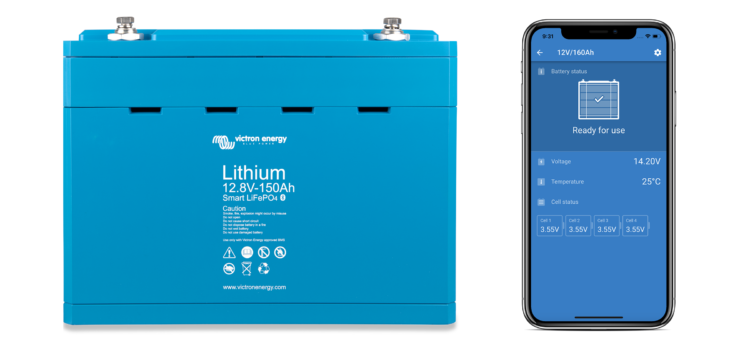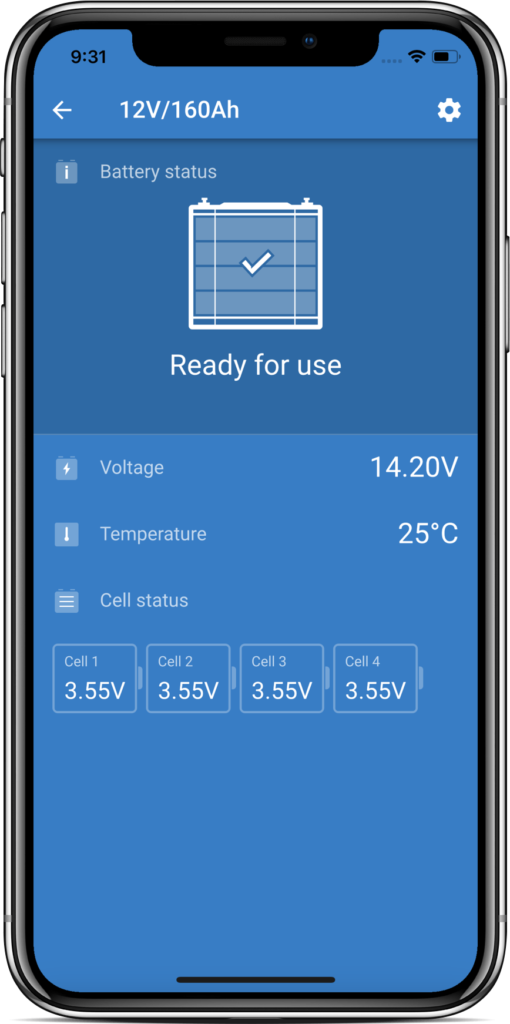
Good day,
Today we’re releasing an update for VictronConnect and our Lithium Smart batteries. The firmware update for the batteries is essential in certain use-cases. The old firmware caused an imbalance between the cells in a battery. As a result the batteries needed a full charge more often than normally required – to restore the balance. The issue affected only 12V Lithium Smart batteries – not the 24V model.
How to update:
Taking each battery in turn, one by one, connect it to VictronConnect – its firmware will then be automatically updated. Be sure to stay close to the battery and follow onscreen instructions. But don’t worry: it is always possible to resume or restart the update in case of an interruption or error.
For systems with multiple batteries, make sure you update all of them. Preferably in one go, but if not possible, do ensure to complete the process within a couple of weeks after updating the first one. Especially for systems with multiple batteries connected in series.
Do I need to re-balance my batteries?
No – most likely not. Batteries will automatically re-balance at the end of every charge cycle.
If you suspect your system has issues it might be necessary to restart the charger several times. Doing so will make sure the battery spends enough time balancing. See also the section below which explains how to recognise imbalance.
Does imbalance affect the life time of my battery?
No. Imbalance only temporarily reduces the usable capacity of a battery. Capacity is restored as soon as the cells are balanced again.
How did the issue affect different systems?
As a rule of thumb, one hour of full power-balancing (voltage above 13.8V) was necessary for every four weeks of use to overcome the imbalance caused by the previous firmware version. Therefore, whether a system was affected or not depends on how the batteries were used:
- When installed in a system that regularly recharges, or stays mostly in ‘float’ – as in a backup system – the issue explained above will not have caused any imbalance.
- When installed in a system that is shut down for prolonged time, such as RV’s, and yachts which are not connected to a charger during the winter, there will be a noticeable cell imbalance. After 6 or 8 months of being in ‘standby’, the imbalance will be such that recovery to a balanced state will take a long time – six to eight hours of absorption (voltage above 14V) is required. In that case, as explained above, first update the firmware of all batteries, and then fully charge the batteries – several times. When you see, in VictronConnect, the voltage drop to 13.5V per battery, that means that the charger has completed its cycle – restart it again.
What improvement will I notice?
With the firmware update, fewer hours of charging will be necessary to maintain balanced batteries. Also, recovering from an imbalanced state will be smoother, and therefore faster.
How to recognise cell imbalance?
A clear indication of imbalance is that the BMS frequently disables the charger. On a well-balanced battery the charger would not be disabled – not even when the batteries are fully charged.
More detail can be seen with the VictronConnect App. Be aware that checking cell balance can be done only near the end of a charge. It’s best to wait for the battery voltage to reach 14.2V, and then check the individual cell voltages. They should all be between 3.50 and 3.60V. Over time they will all become equal at 3.55V. By that time the battery will be completely charged, and balanced.
Here is a screenshot showing a balanced battery. Note the battery voltage is at 14.2V; and the cell voltages are each exactly a quarter of that value at: 3.55V.
Is it OK that the charger is cycling on and off?
Yes. As soon as one cell reaches 3.75V the BMS disables the charger. Whilst the charger is disabled the balancing process still continues, moving energy from the highest cell into adjacent cells. The highest cell voltage will drop, and once it has fallen below 3.65V the charger will be enabled again, automatically. This cycling typically takes between one and three minutes. The voltage of the highest cell will rise again quickly (this can be in a matter of seconds) after which it will be disabled again, and so forth. This does not indicate a problem and will continue until all cells are fully-charged and balanced. Depending on the level of imbalance this process might take several hours: up to 12 hours in the case of serious imbalance. Balancing will continue throughout the process, even when the charger is disabled. The continued enabling and disabling of the charger can appear strange – but be assured there is no problem – the BMS is protecting the cells from over-voltage whilst cell-balancing is in progress.
Performing this process without a BMS, by individually charging the batteries, will not lead to a faster end-result.
Other frequently asked questions
Q1 – Does balancing continue while charging with 13.5V (float voltage)? Yes. Though to completely balance a battery, applying an ‘absorption’ voltage is necessary as well.
Q2 – Does increasing the voltage above 14.2 speed up the balancing? No. The speed of balancing is determined by the maximum rated power of the active & passive balancing circuits inside the battery. Applying a higher voltage will not speed up the process.
Q3 – How about individual charging?
Individual charging of batteries is only required when commissioning a new system that consists of 2 or more batteries connected in series. This is the reason:
Charging a string of batteries connected in series will correct small differences in state-of-charge from one battery to another – but large differences will not be corrected. Brand new batteries will each have a slightly different state of charge. Therefore, new batteries must be fully charged – individually – before wiring in series, or series-parallel configuration.
Note that this type of imbalance is different from cell-imbalance. And note that the now solved issue in the firmware does not cause an imbalance between batteries, only within a battery.
Q4 – What if Bluetooth is disabled on a battery? In case Bluetooth is disabled on a Lithium Smart battery, it can’t be re-enabled again. And therefor the firmware version cannot be checked. Please contact your distributor for a solution.
Q5 – What is the maximum current to re-balance a battery? The recommended maximum current for an imbalanced battery is the same as the normal maximum current as per datasheet. The new firmware contains improvements that makes it unnecessary to use a small current, also in case of severe imbalance. Note though that a BMS must be connected and controlling the charger.
In summary: no changes to charging profiles, voltages or charge current settings are required.
Conclusion
A lengthy post to bring a complex message. I wish to be transparent, but at the same time not cause too much worry. The vast majority of installed systems are working well, and with this new firmware they will work even better – with fewer hours of absorption required to maintain balance.
In conclusion, once updated, the batteries work better than ever before. The new firmware version has been tested in our R&D facility as well as in field-trials, and has proved to work really well. As one of our customers commented, “I had not seen the voltage of the cells in my batteries this consistent before.”.
Our apologies for inconvenience caused.
Yours sincerely,
Matthijs Vader















